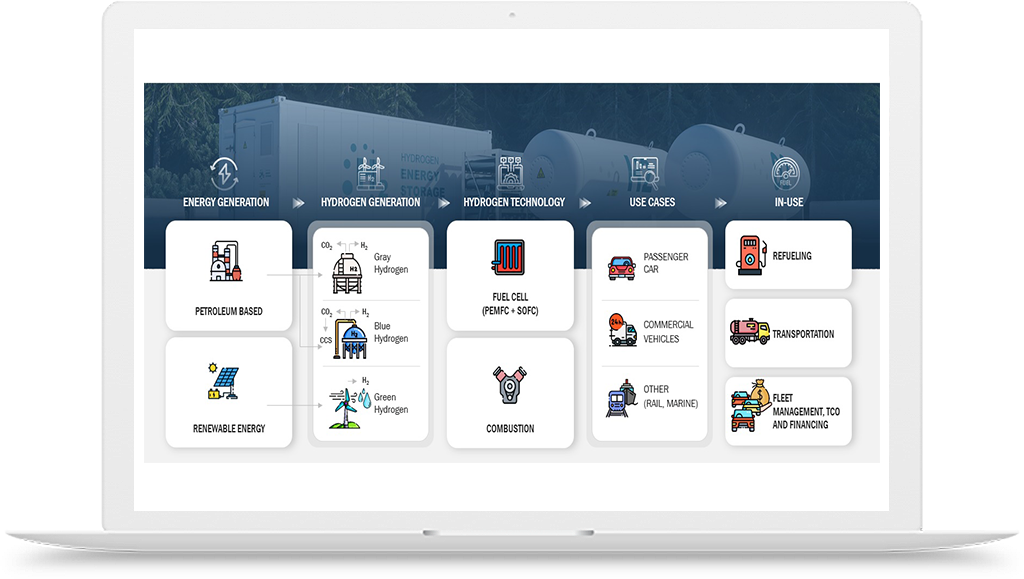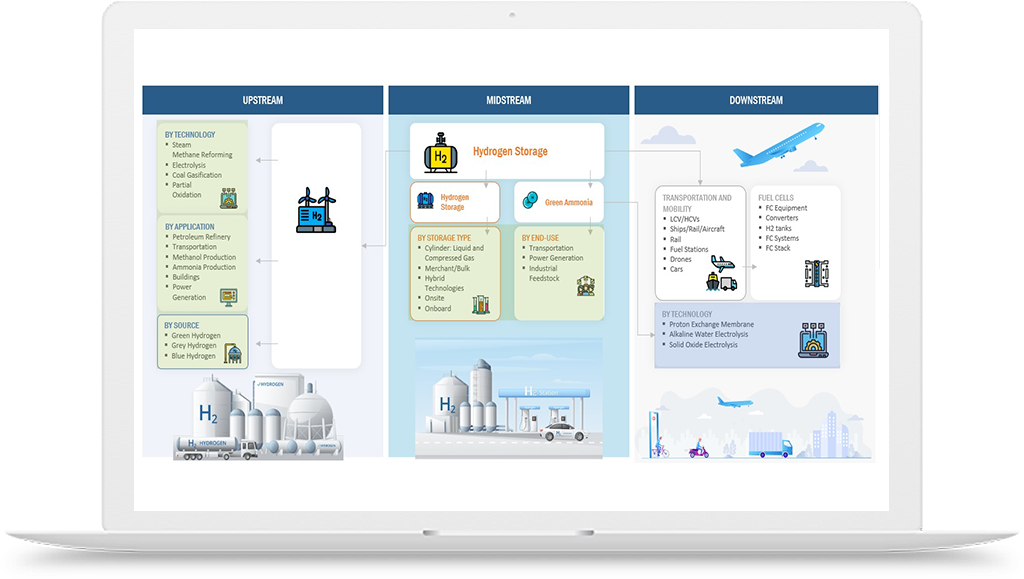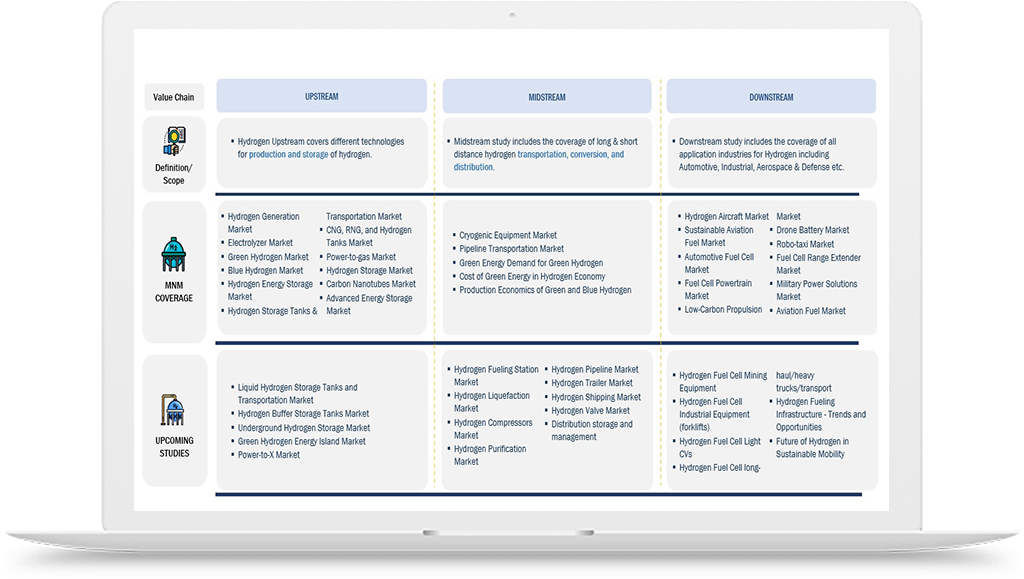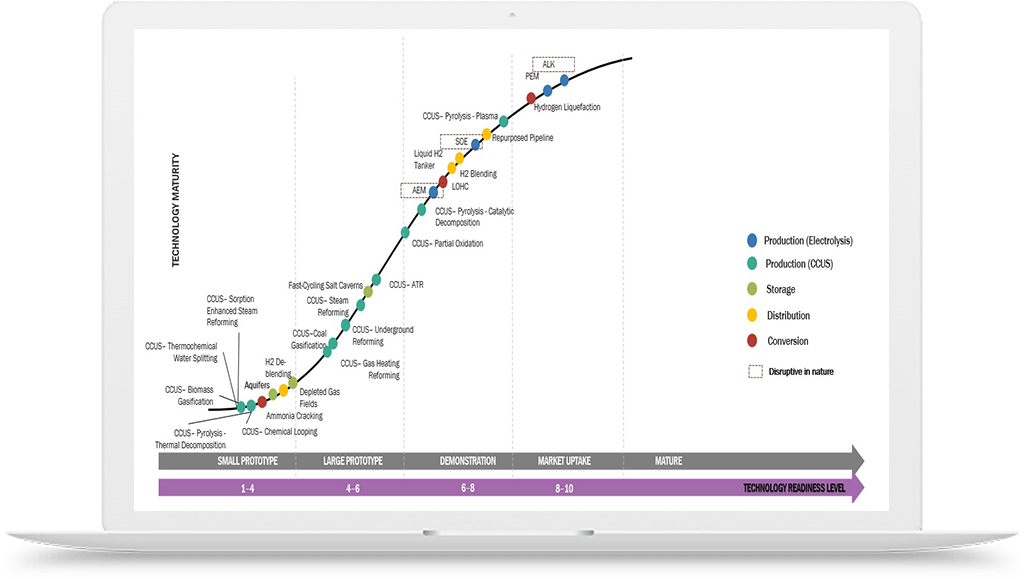Hydrogen Technology Solutions
Hydrogen Technology Solutions - Green Hydrogen, Gray Hydrogen or any other technology. By region and application
It's crucial to assess the unique conditions, local factors, and application needs when deciding which hydrogen industry technology to concentrate on.
Now let's explore the numerous forms of hydrogen and how they differ in different environments and uses:
Green hydrogen is gaining importance in the global search for greener energy sources, as this paradigm shift toward it highlights. This technology provides a viable way to lessen the effects of climate change while also reducing dependency on fossil fuels because to its dedication to using renewable resources. The focus that hydrogen technology solutions have drawn indicates the increasing awareness of the necessity of switching from fossil fuels to greener alternatives.
In summary, green hydrogen technology is a ray of hope for the production of more sustainable and clean energy. As an environmentally responsible substitute for conventional hydrogen generation techniques, it provides electrolysis, a transformative process fueled by renewable energy.
-
Green Hydrogen Technology:
Production: Electrolysis, which makes use of renewable energy sources like solar, wind, or hydroelectric power, produces green hydrogen. One benefit is that it produces no emissions at all because carbon emissions are not produced during the electrolysis process.
Regional Aspects: The production of green hydrogen is most appropriate in areas with a surplus of renewable energy sources, such as solar or wind. To aid in the decarbonization process, these areas can take advantage of their renewable potential to manufacture green hydrogen on a large scale.
Example: Northern European countries like Denmark and Germany, which have substantial wind energy resources, are focusing on green hydrogen production to support their energy transition and reduce reliance on fossil fuels.
-
The Power of Hydrogen Technology Solutions:
- Renewable Energy Integration: Green hydrogen plays a pivotal role in facilitating the assimilation of renewable energy sources into the conventional energy infrastructure. Green hydrogen, a valuable storage medium, can be produced from excess energy generated during high-renewable output periods. This improves renewable energy systems' stability and dependability.
- The Decarbonizing Industry: Solutions based on hydrogen technology provide a way to electrify historically hard-to-decarbonize industries. Green hydrogen can be used as a clean fuel in heavy industries, aviation, and shipping to lessen carbon emissions and support international efforts to tackle climate change.
-
Gray Hydrogen Technology:
In the ever-evolving realm of energy solutions, gray hydrogen technology has long played a significant role. Despite its widespread use, there is a growing acknowledgment of the environmental challenges linked to its production. This article delves into the intricacies of gray hydrogen technology, exploring the complexities it presents and potential solutions within the realm of hydrogen technology.
Production: Gray hydrogen is produced through steam methane reforming (SMR) or coal gasification, processes that rely on fossil fuels. This method emits significant carbon dioxide as a byproduct.
Regional Considerations: Gray hydrogen has been historically prevalent and cost-competitive due to the existing infrastructure for fossil fuel-based hydrogen production. Regions with established fossil fuel industries and infrastructure may initially rely on gray hydrogen.
Transition: Through incremental purification, this procedure can help produce low-carbon hydrogen and eventually make gray hydrogen cleaner.
Example: As an illustration, because of their access to fossil fuel supplies and existing infrastructure, many areas, including portions of Asia and North America, still heavily rely on gray hydrogen.
-
Cleaner Futures using Hydrogen Technology:
- Carbon Capture and Storage (CCS): The utilization of carbon capture and storage (CCS) technologies can effectively reduce the ecological consequences of gray hydrogen emissions. CCS reduces the carbon impact of gray hydrogen while enabling its continuous usage. It does this by absorbing and storing the carbon dioxide emissions generated during hydrogen synthesis.
- Hydrogen Blending: An intermediate step towards cleaner hydrogen production involves blending gray hydrogen with green hydrogen. This process dilutes the carbon intensity of the hydrogen produced, providing a transitional solution while the industry evolves towards more sustainable practices.
-
Blue Hydrogen Technology:
Blue hydrogen technology has become a prominent participant in the search for sustainable energy solutions, demonstrating its ability to balance the world's expanding energy needs with environmental concerns. In-depth analyses of cutting-edge hydrogen technology solutions and an exploration of the field of blue hydrogen technology are provided in this article, which also discusses how hydrogen technology is defining a more sustainable and environmentally friendly future.
Manufacturing: To manufacture blue hydrogen, carbon capture, utilization, and storage (CCUS) technologies are employed in conjunction with fossil fuels such as natural gas. Hybrid hydrogen has less emissions than gray hydrogen since the carbon emissions from its generation are sequestered and kept in reserve.
Manufacturing: Areas with substantial natural gas supplies and well-established CCUS infrastructure may find blue hydrogen to be especially pertinent. It enables these areas to make use of their current infrastructure and resources while lowering emissions.
Example: As an illustration, as part of its decarbonization policy, the United Kingdom has been concentrating on blue hydrogen, investing in CCUS infrastructure and exploiting its natural gas supplies to lower emissions from hydrogen generation.
-
Hydrogen Technology Solutions Driving Blue Hydrogen:
- Carbon Capture and Storage (CCS): At the core of blue hydrogen technology solutions is the implementation of CCS. This process captures carbon emissions produced during hydrogen production and stores them underground, preventing their release into the atmosphere. CCS enhances the environmental credentials of blue hydrogen.
- Technological Innovations in SMR: Ongoing research and development efforts focus on optimizing the steam methane reforming process to make it more efficient and environmentally friendly. Innovations in catalyst technologies and process enhancements contribute to reducing carbon emissions during hydrogen production.
-
Conclusion:
In summary, the utilization of blue hydrogen technology, which prioritizes carbon capture and storage, is a noteworthy advancement in the pursuit of low-carbon and sustainable energy solutions. Blue hydrogen is positioned as a major participant in the global energy transition through the integration of hydrogen technology solutions, such as CCS and continuous improvements. Blue hydrogen is an attractive solution for supplying the expanding need for clean energy as the globe works toward a more environmentally friendly future due to its versatility and advantages.
-
Turquoise Hydrogen:
Turquoise hydrogen has become a cutting-edge option in the ever-changing clean energy landscape by utilizing cutting-edge hydrogen technology to promote sustainability. This essay examines the revolutionary potential of blue hydrogen and the cutting-edge technological solutions in hydrogen that place it at the forefront of the search for more effective and environmentally friendly energy sources.
The production process of turquoise hydrogen is distinct since it combines carbon capture and storage (CCS) with methane pyrolysis. With its novel method of producing hydrogen without the carbon emissions usually associated with methane reforming, this strategy tackles the environmental issues of conventional hydrogen production.
Production: Natural gas pyrolysis is the process that turns methane into hydrogen and solid carbon without releasing carbon dioxide. This is how turquoise hydrogen is made. In industrial settings, the solid carbon can be extracted, stored, or put to use.
Geographic considerations: In regions having access to natural gas sources and the necessary infrastructure to produce hydrogen from natural gas, turquoise hydrogen may be researched as a low-carbon alternative.
Example: As an illustration, the Middle East, which has abundant natural gas resources, ought to look into producing turquoise hydrogen in order to diversify its energy sources and meet global decarbonization goals.
Notably, preferences for particular types of hydrogen may shift over time as costs vary, technology improves, and the environment surrounding renewable energy changes. The end game is to move to a hydrogen economy that is mostly green. The individual conditions, resources available, infrastructure already in place, and emission reduction goals of each region, however, may influence the technology selection.
Applications of different types of hydrogen:
- Decarbonization of Hard-to-Electrify Sectors: Turquoise hydrogen has the ability to immediately decarbonize industries like heavy industrial and specific transportation modes that are difficult to electrify. This makes turquoise hydrogen appear like a flexible way to cut carbon emissions in a range of sectors.
- Integration with Current Natural Gas Infrastructure: Turquoise hydrogen makes a more seamless switch to cleaner energy sources by utilizing the current natural gas infrastructure. Because of its versatility, turquoise hydrogen is a sensible alternative for quick deployment because it lessens the need for significant infrastructure renovations.
-
Green Hydrogen Applications:
- Zero Emissions Transport: Green hydrogen offers zero-emission mobility options when it comes to fuel cell vehicles, such as cars, buses, trucks, and trains.
- Power Generation: Grid stability and the integration of renewable energy sources can be supported by the use of green hydrogen in fuel cells to produce electricity without emitting carbon dioxide.
- Industry: To cut carbon emissions, green hydrogen can be utilized as a fuel or feedstock in a number of industrial processes, including the manufacture of steel, ammonia, and refining technique.
-
Gray Hydrogen and Blue Hydrogen Applications:
- Industrial Applications: Grey and blue hydrogen can be utilized as feedstock or fuel in industries like petrochemicals, refining, and metal processing, while emissions reduction efforts are being carried out by alternative methods like carbon capture and storage (CCS) or utilization (CCU).
- Heating and Power Generation: Combining heat and power (CHP) systems with gray and blue hydrogen allows for the production of both heat and electricity in areas where natural gas infrastructure is already established.
-
Applications for Turquoise Hydrogen:
- Industrial Applications: As a lower-emission substitute for gray and blue hydrogen, turquoise hydrogen can be utilized in industrial processes.
- Synthetic Fuels: Turquoise hydrogen may be utilized to create sustainable aviation fuel or synthetic natural gas, two types of synthetic fuels that have smaller carbon footprints.
The ultimate objective is to switch to green hydrogen for all uses. But in the interim, gray, blue, and turquoise hydrogen might help cut emissions and offer low-carbon substitutes in situations where green hydrogen availability or full electrification might be difficult at first.
Various considerations, including cost, infrastructure availability, emission reduction targets, and technological preparedness, may influence the selection of hydrogen type for a given application. The focus will gradually move to green hydrogen and its uses in order to meet long-term net zero emission targets as the hydrogen market develops.
















